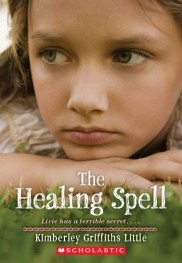Recently I was listening to a review of the TV series The Affair, an innovative show told from the points of view of four characters with intertwined lives. You’re probably wondering right now what this could possibly have to do with middle-grade novels. Bear with me.
The reviewer highlighted the fact that often when the same scene is shown through two different characters’ eyes, subtle changes, such as where the characters are sitting, what clothes they’re wearing, and what aspects of the situation they choose to highlight, reveal the differences in how they perceive things. As a result, the viewer is left with the task of finding the real truth among the “truths” that these characters believe they’re telling. The show’s technique is not only a lesson in perception, but also a device to have viewers empathize with all the characters and not just the one they most identify with.
Now here’s the part where middle-grade books come in: In his book, Teaching Children to Learn, author Robert Fisher states: “We develop empathy and understanding of others when our perception is broadened … One way to broaden perception is to try to see things from another person’s point of view.” That, he says, “requires an ability to listen to the views expressed by other people, and to make an imaginative leap to understand their feelings and ideas. This leap of imagination is fundamental to moral development and to an understanding of others (or what has been called interpersonal intelligence).”
Of course, reading fiction in and of itself contributes to this leap of the imagination. But I’m wondering if stories told from multiple points of view might result in an even greater leap toward moral development and the understanding of others.
Interestingly, writers are often told to write from one point of view in order for the reader to identify with the main character. Yet many books with multiple narrators have been extremely popular with readers of all ages. I suspect credit goes to the skill of the writer to be able to pull off a book in which a reader can empathize with several narrators. Here are a few favorites:

Goodbye Stranger by Rebecca Stead
In Stead’s most recent novel, three narrators navigate the course of friendship, first love, politics, identity, and the pitfalls of adolescence throughout seventh grade.

Because of Mr. Terupt by Rob Buyea
This book and its two sequels Mr. Terupt Falls Again and Saving Mr. Terupt follow seven students from fifth to seventh grade. Written from the points of view of each of them, the books give readers a glimpse of how several different characters deal with their own challenges as well as each other.
This novel about a homeschooler forced to go to middle school when his grandmother is hospitalized highlights the issue of bullying. Events unfold from the points of view of the main character, Cap, as well as his social worker, her daughter, a bully, a victim, a popular girl, and others.
Wonder by R.J. Palacio
This long-time best seller tells the story of Auggie, a boy with a facial deformity who enters school for the first time. The story is told from the points of view of Auggie, his friends, his sister, and her boyfriend.
Flipped by Wendelin Van Draanen
Narrated from the points of view of two characters, a boy and girl who have known each other since second grade, the novel goes back and forth, showing each one’s feelings now that they’re both in eighth grade and see life differently.
How do you think these books and others written from multiple perspectives add to the reading experience and/or moral development of middle-grade readers? I’d love to hear your thoughts.
Dorian Cirrone has written several books for children and teens. Her middle-grade novel, The First Last Day, which takes place on the New Jersey Shore, will be published in summer 2016 from S&S/Aladdin. You can find her on Facebook and on Twitter as @DorianCirrone. She gives writing tips and does occasional giveaways on her blog at: http://doriancirrone.com/welcome/blog/









